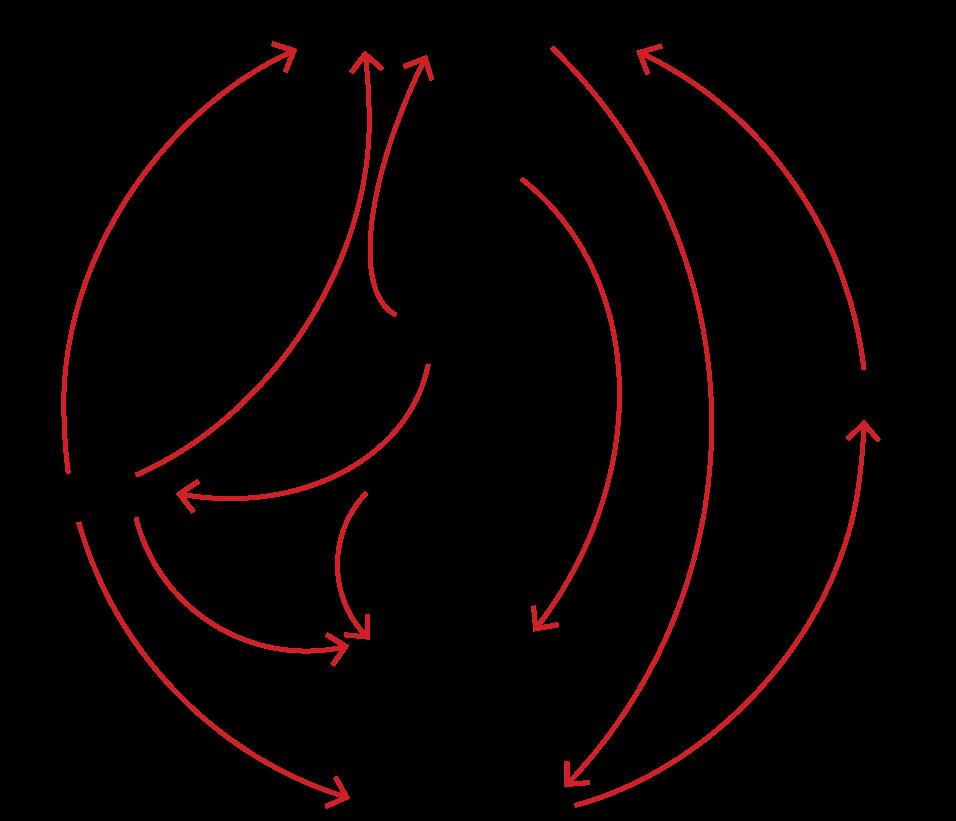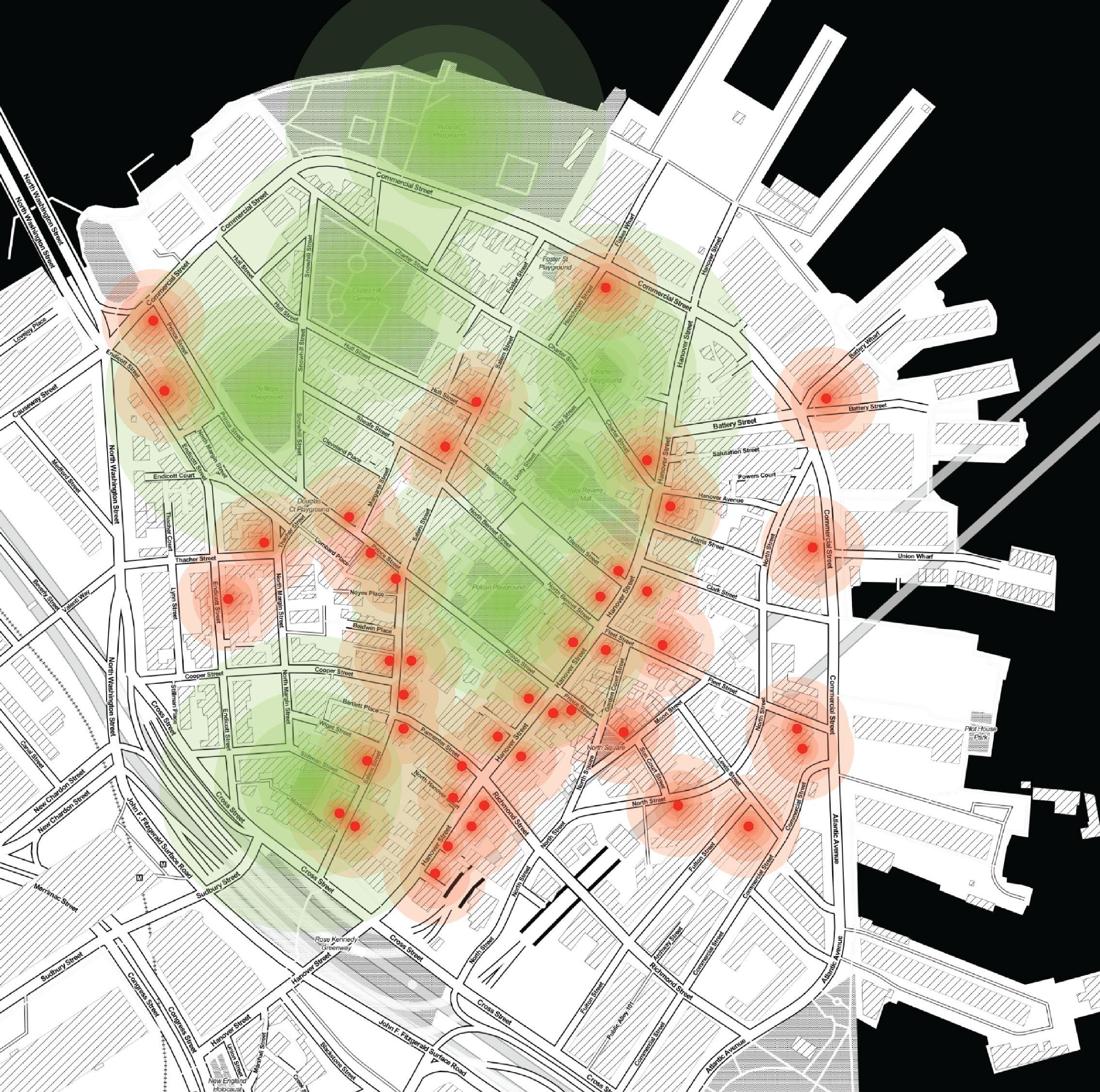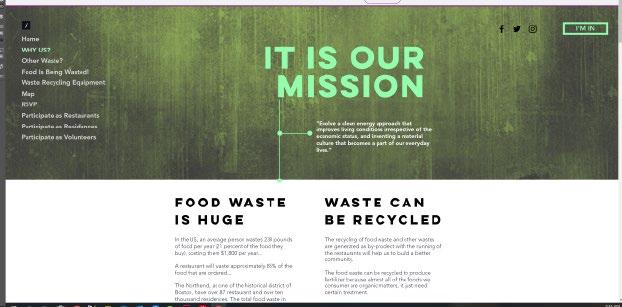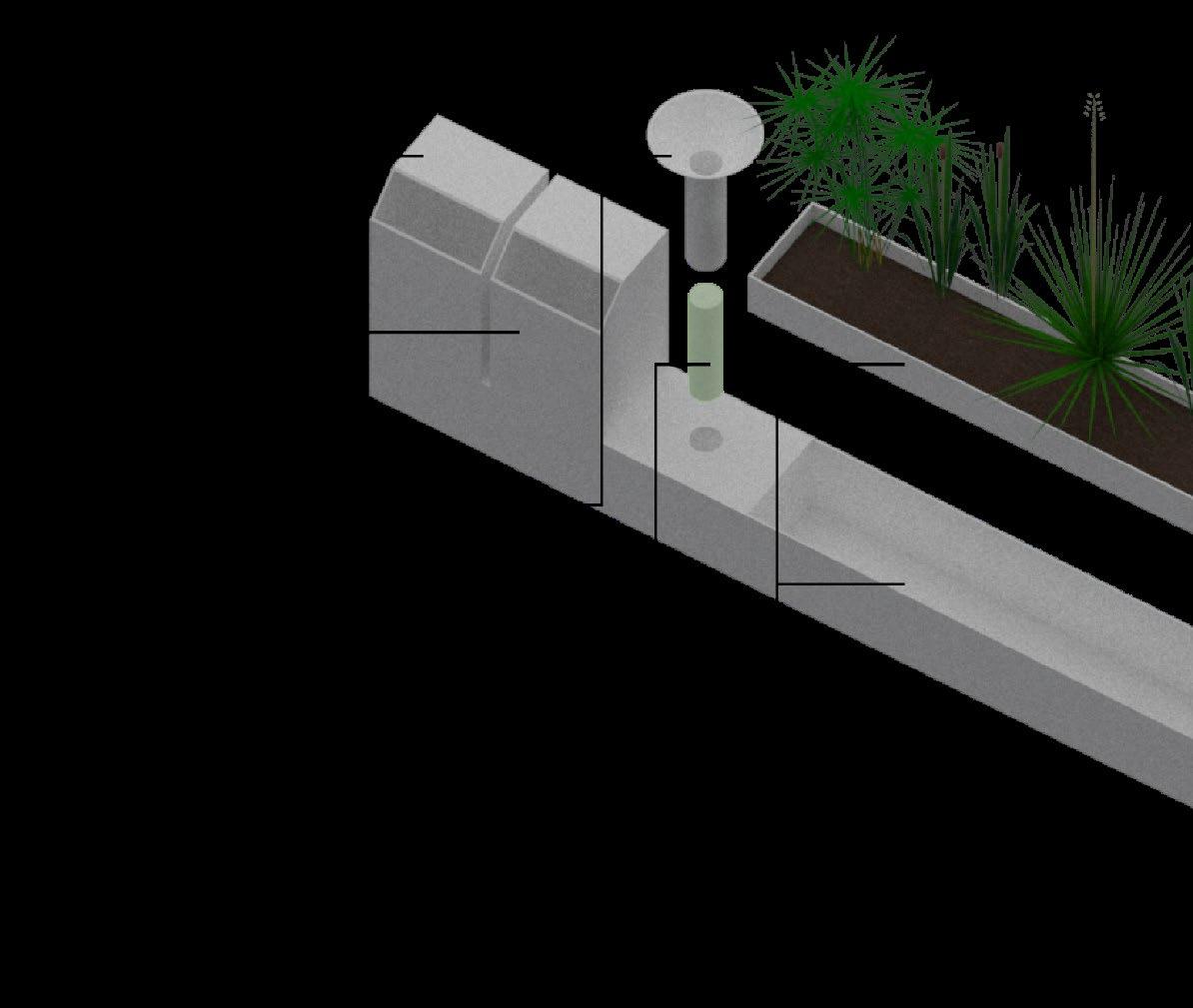
3 minute read
Community Practice
urban
Advertisement
challenge
FND 2007 Community Practice Instructor: Rashmi Ramaswamy Date: 21 st , Jan 2020 - 7 th , May 2020 Individual & Group work
we Survey
We will distribute questionnaires to different people based on their demographic background and find out what is the problem of The NorthEnd
we analyse
We will analyse the site, the people and the feedback from the survey, in order to have this engagement “touch the ground“
After we analyzed the situation, we decided to make change to the situation of food waste in the NorthEnd. Since this area is a hot zone for tourists, the density and amount of the restaurants in this area is much higher than other residential areas in the city of Boston. After decided the topic for our Urban Challenge, we analyzed the NorthEnd and generated this loop diagram to figure out what we need to change and who need to involve in this change. Then, we decided to create a website to promote our idea and engage in this community. Introduction
we calculate
We will calculate the damage of the problem and how much effort we need to make for solving the current problem

we act
We will act by uniting different groups of people in order to solve the problem using a bottom to the top approach

Based on GoogleMap, I market most of the restaurants on the base map, and then marked the green spaces on the base map, for the audience to understand how dense the restaurants are. Also, the greenspaces located in a unbalance way. Site Analysis 49



Our Recycling Prototype This prototype will collect wastes and turn them into useful recources. Also, part of the wastes will be used to sustain the growth of the plants.
The home Page https://ccalvinyou.wixsite.com/urbanchallenge Why US? This Page will provide an overview of our mission and goal to the people who is interested to our urban challenge. Also this page will alert them why we need to make change in the NorthEnd.
Other Waste? This Page will provide an overview of our organization including who we are and how can we change the current situation. The way how we analyze the problem the react to it will be presented in this page.
This Page will provide an obverview of further details about how we planned to change the situation. Including our prototype designed for out Urban Challenge

Reflection I always wanted to be an architect who only believe in my own perception and ideas, and I used to believe the world is run by capital and policies, not by John Smiths live in the neighbours and communities. After taking this class, I discovered the community practice and engagement also matters. Because architecture do not just design, we also need to plan, allocate and refine public spaces. The feed back from the community is the best reference for us to use during the design. The community actually stands for almost everything we are heading toward to achieve architecturally today. Sustainability, WELL Building Standard and landscape ecology analysis are all aimed to provide better living condition to people, and community stands for the group of people. So engaging community properly and practice in community carefully is a method for architects to design great architectures. What I also learned is that the value of teamwork. I used to be a person who hate teamwork. However, the power from an individual is limited by his energy and experience. A team consists of different people with different background can have much better performance comparing with an individual. Also, working with my GAS fellow are really pleasuring because we are also friends. I think the most valuable thing I learned from this class is I should be more focused on “humanity” rather than being too focused on “rationality”. I used to believe rationality is the enemy of humanity, however, after taking this course, I found they are more of a unity of opposites. They are bounded together so deeply while they are still contradictory.






